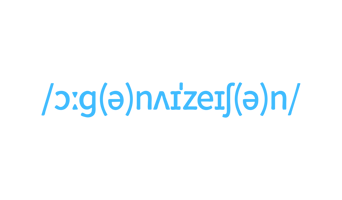Drawing organizational charts is one of the most common organizing practices. Used as a shortcut to reorganization, however, the approach risks to miss the understanding of how the organization really works.
“A chart is nothing but an oversimplification which enables people to make sure that they talk about the same things in discussing organization.” — Peter Drucker
Many managers are obsessed with organizational charts. Whenever a company undergoes fundamental change, from either rapid growth or a new strategy, organizational questions are eventually addressed by putting “lines and boxes” on paper. Drawing organizational charts is certainly the most widely shared organizing practice.
Why “org charting” is one of the most common organizing practices
There are three reasons why playing around with organization charts is one of the most common practices of redesigning organizations.
-
First, org charts are a simple tool: quickly drawn and changed (at least on paper).
-
Second, org charts are unrivalled in representing order and structure of a complex organization. While this clarity unfortunately reduces managerial realities to an abstraction, it does provide orientation for organizational stakeholders who can read the org chart as defining spheres of influence, power, and the front lines of organizational politics.
-
And last, org charts put “names to tasks”, thus assigning responsibilities and creating a kind of home base for organizational members.
Org charts are a tempting mechanism to give simple answers to complex business issues. While it is easy to explain why drawing organizational charts is such a dominant practice, I argue that focusing on lines and boxes too early and too heavily in the process carries major risks and downsides.
Two major downsides stand out:
-
first, the simplicity of an org chart risks leaving out some key elements of organizational structures, such as how the organization ‘really works’. For example, the org chart does not capture how units cooperate to achieve joint deliverables.
-
Second, an org chart focus makes it easy to forget about informal elements of organizing (e.g. culture, unwritten rules or networks), which are extremely important in effectively handling complex business challenges.
Boost organizational effectiveness with Management Kits
When starting a reorganization, make sure to capture how the organization really works
To prevent the first downside, defining organizational charts must be accompanied by a holistic understanding of how the organization functions. This understanding includes several elements that go beyond classical org charts (which incorporate an organization’s unit structure and, for the levels covered, the span of control): a link to strategic objectives, explicit discussion of the scope and limits of organizing efforts, analysis of key activities driving the strategy and a definition of the links between organizational units. As part of our Organizational Structure Kit, we have come up with a framework that covers those six elements of goals, limits, activities, units, links, and shape.
First we shape our org chart, then our org chart shapes us
The second downside occurs when the org chart abstraction starts to represent and supplant organizational realities. Adapting a famous quote from Winston Churchill, one could say: first we shape our org chart, then our org chart shapes us. In particular, organizational members sometimes interpret the clearly outlined lines and boxes as ‘natural barriers’ that determine communication and organizational communities (especially when there are formal incentive systems strongly synchronized to organizational entities). Org charts understood and enacted in this way hinder the evolution of informal networks, communities of practice, and a spirit of cooperation; these are essential for organizations that must deal with any non-standard, non-routinized issues. As such, it is important to not let the organizational chart get in the way of informal lateral and vertical relationships across the organization – as well as resulting information flows that often make the difference between high performance and near-failure.
Five questions to consider before jumping to org charts
To conclude, we suggest asking yourself these five questions before you start drawing organization charts:
-
Do you have a clear understanding of your strategy implications for the organizational structure?
-
Is there a shared understanding within your organization of the key activities which make you successful and deliver your strategy?
-
Have you considered alternative options for your overarching unit structure, e.g. whether this follows a geographical, functional, or process logic?
-
Do you know where and how your units will have to work together to drive key deliverables for your organization?
-
What crucial informal organizational elements (like networks, communities and lived values) do you want to ensure are strengthened?
Postponing any changes to ‘lines and boxes’ until you have thoroughly considered the above questions may be a constructive first step in coming up with an organizational structure that supports your strategy, instead of getting in the way of organizational effectiveness.
The Organizational Structure Kit is designed to support this process. Click below to get a free preview.



